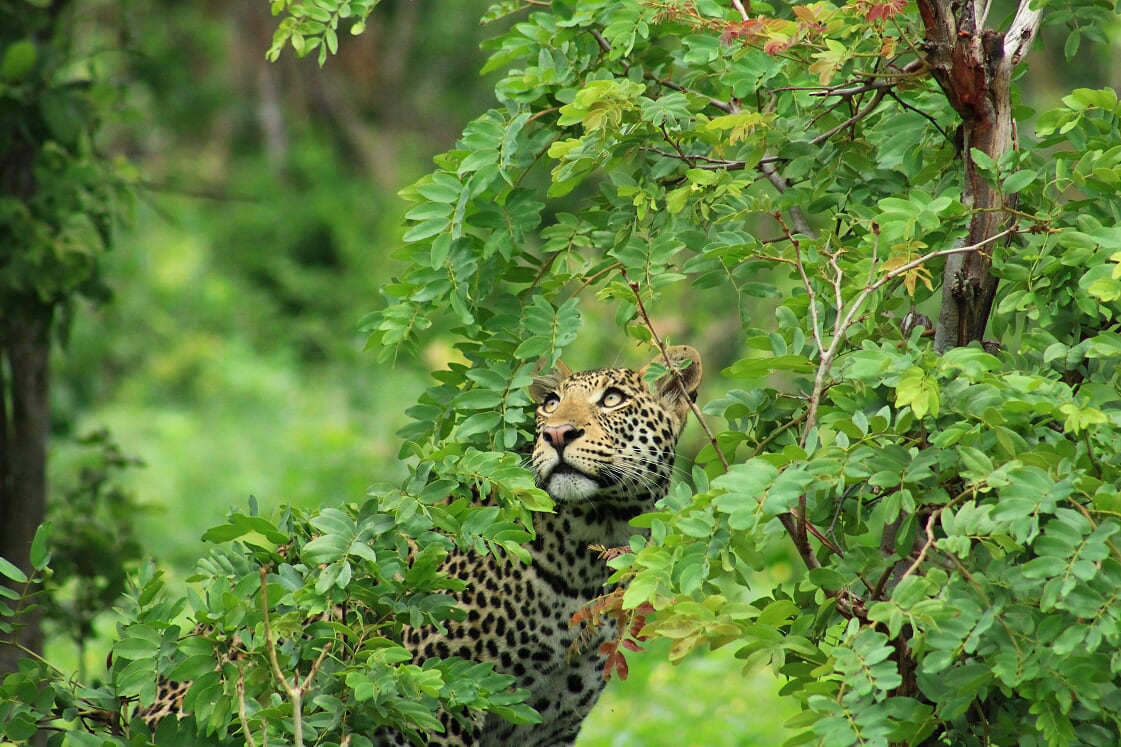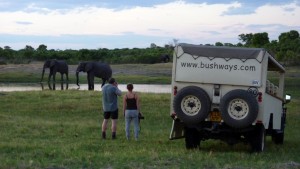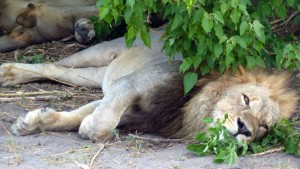Self-Driving in Botswana
Botswana is known for some of the last unspoilt wildlife areas in the world and as such offers a unique experience to anybody wanting to discover the beauty, remoteness and diversity of Botswana’s landscapes and its animals.
Besides lodge-to-lodge mobile safaris and fly in safaris, Botswana is a great destination for anybody seeking an adventure and wanting to embark on a one of a kind self-drive trip.
Camping in unfenced wildlife areas, waking up early with the sunrise while looking across the moonlike landscape of the salt pans and getting up close with some of the biggest mammals on earth is truly an unforgettable experience.
There are however a few things, travellers should keep in mind when deciding to explore Botswana on their own terms.
Driving through Botswana is nothing like driving through for example the well known Kruger National Park or Namibia, with tar roads and clearly marked directions. Botswana can present some challenges – difficult road conditions with deep sand, destinations far apart from each other, remote areas without signage and confusing “road” networks. All the more important it is to be thoroughly prepared and use the tools at hand to make sure your journey will be the safari of your dreams.

First of all, it is important to understand the different areas and the different types of self-drives.
Make sure you have done your research regarding which areas you would like to visit and what the road conditions are like. Road conditions can vary from main tar roads, to sharp gravel road, deep sandy roads and water crossings.
Unless you are only planning to drive on tar roads, driving with a 4×4 vehicle is an absolute must! Ideally, the vehicle should have a long range fuel tank or in case it doesn’t, you need to take extra jerry cans. There are no fuel stations in National Parks and even outside the parks, you sometimes need to drive far distances before reaching the next fuel stations.
Another important thing to keep in mind is that the vehicle is properly equipped. Even on tar roads, there is mostly no network between cities. Therefore, it is essential to be travelling with a satellite phone should you have an emergency and need help.
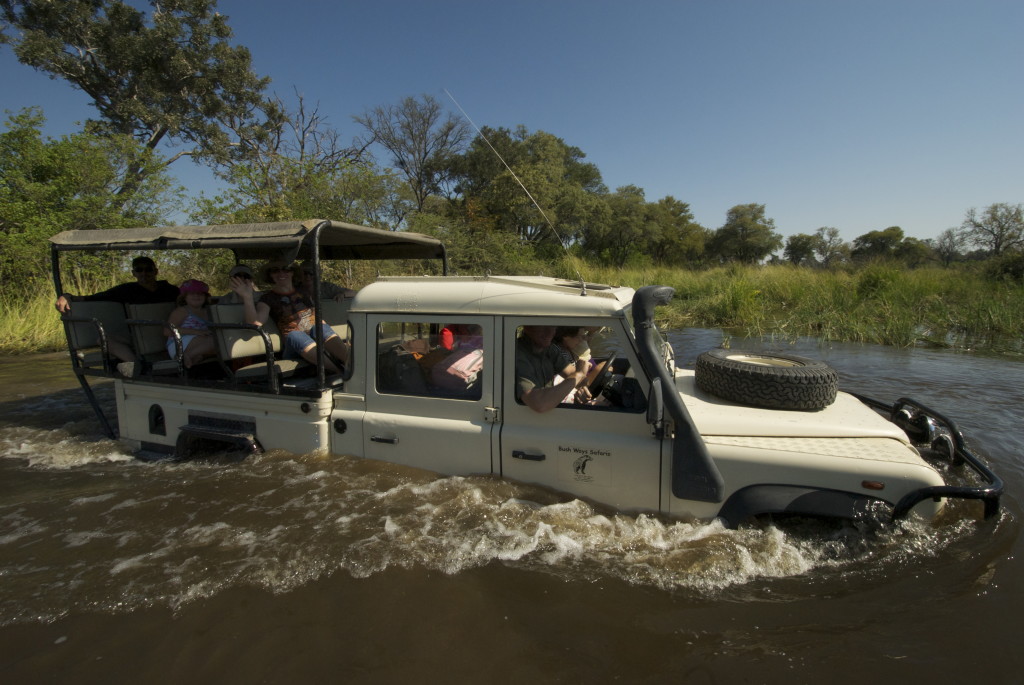
Besides that, the car should also be equipped with tools you need in case you get stuck or have a break down, such as a spade, sand ladders, hi-lift jack, tyre repair kit, compressor etc. and of course spare tyres.
In order to find your way around, you should travel with adequate maps, GPS and best of all, Tracks4Africa. Tracks for Africa is a very user-friendly app that you can download on your phone, and the best about it, it works offline! Even in the remotest areas, the app connects the dots via GPS signal and allows people travelling to easily find their way around the complicated and sometimes a bit chaotic bush network.
We know that some clients struggle with the costs for the app. It currently costs USD 50, but this includes regular updates. The app covers many African countries including South Africa, Namibia, Botswana, Zambia and Zimbabwe and many more. Users purchase it once and can use it again and again.
The National Parks are completely wild and camping is only allowed in designated campsite areas.
The campsites are not fenced, which means, animals regularly walk through them, adding to the thrill of being up close with wildlife. However, make sure you keep a safe distance from wild animals – for your own safety but also to respect the wildlife. The same applies to when you are driving. Keep a safe distance from animals, do not go off-road and stick to the well-used track to ensure you have a smooth trip!

You should not be driving at night. Besides it not being allowed in a National Park, it is very dangerous to drive on Botswana’s tar roads at night. Animals can roam freely and there are no fences or street lights along the roads which means farm animals use the warm tar as a sleeping place. Statistically the number one cause of road accidents is hitting an animal while driving at night.
For the less adventurous traveller Botswana can be perfectly combined with Namibia. One of our best selling trips is a self drive trip which starts and ends in Windhoek and which combines the stunning landscapes of Namibia with the vast Wilderness of Botswana. The Delta can be included on a 3 night fly-in, for the rest of the safari traveller stick to the tar roads and link Maun with Kasane via Nata (including a stop along the Boteti or the Salt Pans).
There is so much to explore – come and visit. As you know everyday not spend on safari is a lost day 🙂
#LostInBots
We’re only momentarily disorientated… I’ve been lucky enough to call Botswana home for 7 years now and have traversed most of its dusty roads. However, there are always new gems to explore and last weekend the Makgadikgadi National Park was on the itinerary. This largely underutilised park only has a couple of roads crisscrossing its interior and most of them are long and straight with miles of visibility. Despite these pretty good odds, I still managed to be momentarily disorientated… or in plain English “lost”.
In hindsight this is actually a pretty impressive feat seeing as there are so few roads and yet we still managed to miss one of them – turns out it was the crucial one. We had booked a campsite in the middle of the park but for some reason we ended up on the Boteti river which forms the western boundary of the park. I’ll never forget when we came out of the ‘woods’ onto a ridge with a very pretty view of a dry river bed. After a moment or two of complementing the view it dawned on me that we were looking down on the Boteti and nowhere near where we were supposed to be. The little cement pillar stating Khumaga office a mere 2km away confirmed this. I couldn’t help but start laughing, almost uncontrollably, at this rather long detour. It was now 15h00, we’d left Maun at 8h30 and still had to cover 60km to get to the campsite and set up camp. Suffice to say the giraffe, gemsbok and elephants we’d passed earlier looked a little surprised to see us again so soon going the opposite direction at a slightly faster pace..
We made it to Tree Island in record time, set up camp and managed to get out onto the pans for a well-deserved sundowner. Nothing beats the open spaces the pans have to offer, there is quite literally nobody around let alone any man-made structures to disturb the endless views. My Dutch friend, who is an avid sailor, likened the emptiness of the park to being out at sea – the grass waving in the gentle breeze reminded him of the waves and if you know enough about astronomy you can easily navigate by the stars. I’ve seen plenty of impressive night skies but on a moonless night like we had, the universe in all its glory makes you seem very small and irrelevant in the larger scheme of things. A feeling that more people should experience more often if you ask me! 
Back in camp dinner was served and we ended the day with a nightcap around the fire – you’re not camping properly if you’re not sitting around a fire contemplating the days’ adventures whilst hearing lions roar in the background.
The next morning, we left bright and early, changed our second flat tyre and made our way back to the Boteti (we knew the road by heart now..) to catch the annual zebra migration. This natural phenomenon is utterly astounding and quite literally breath taking. Imagine hundreds of zebra and wildebeest making their way down to the river, which isn’t much more than a couple of big puddles and trying to squeeze in between large herds of elephants. We parked our car under the trees, opened our picnic lunches and just sat there for hours watching the spectacle unfold before our eyes. Whilst the zebra, wildebeest and elephants were all jostling for space lions starting calling. I’m convinced they did so just to make the experience all the more surreal for us. 
No matter how long I’ve been in Africa for nor how many safaris I’ve done, those hours spent on the river banks watching the spectacular migration in action is something I won’t easily forget. It ranks pretty high in special moments and trust me, this continent has granted me quite a few!
MY HONEYMOON OF A LIFETIME (with 28 in-laws)
Ever been on honeymoon with 28 in-laws? Or made promises of the most awesome holiday? Or wanted to make others fall in love with Botswana? Maybe you can answer yes to one of these questions but all three?! That is me: going where others fear to tread!
I sent my request for this holiday, thinking: “Puuuh! We are a large group. 29 pax! How on earth are we going to fit all those people into safari vehicles and go on safari for 6 nights?” The worst of it: an unhappy safari would mean 28 in-laws mad at me that I overpromised on my beautiful Botswana. So the pressure was on. My national pride was at stake! I love my country and wanted my new family to fall in love with it and to go home raving about this awesome safari experience. The solution to my crazy request was a mobile safari with Bush Ways Safaris!
The first day of our Bush Ways’ semi-participation safari started with a bang. Eddie and Moscow, our guides, with their assistants, and our three safari vehicles with big trailers including all safari equipment expected us outside Maun Lodge ready for our journey to begin. Excitement filled the air! After a briefing of the route of the day, was the vehicle naming ceremony. We were ‘The Xakanaxa Endurance’. I secretly hoped that this was not going to be a journey of me “enduring” unhappy in-laws. In their usual style, Bush Ways’ staff were on time, organised, friendly and informative. So far so very good.
 Hugo and KD chopping some firewood
Hugo and KD chopping some firewood
The first stop of our journey was Khwai. And boy she did not disappoint, revealing some amazing sightings for my new extended family. On day two, we spotted a pride of 17 lions with cubs!! They had killed 4 buffalos the previous night and they were busy feasting when we arrived at the sighting. The cubs were running around with buffalo guts, falling over their feet and haul. Vultures were scavenging around also wanting to join in the feast! Looking around, I saw happy smiling family faces. It was going well.
Next we set off for Savute. It had rained a lot the previous night, so temperatures were just right for game-viewing. The rainy season means loads of babies and that is what we got: baby giraffes, baby impalas, baby kudu, baby elephants, baby zebra and even six baby hyena in their den with Mom. A sighting of 2 male lions drew our attention but we caught our breath with the next sighting. It was too good to be true. It was a fully-grown male leopard lying in a tree! Seriously it was too good to be true! That evening, sundowners with the setting of the bright orange Botswana sun, had us all feeling contented. Life was good.
Next up was Chobe, ‘the mothership of elephants’. Being the rainy season, I did not expect to see as many elephants as I did! We counted about a thousand elephants: they were everywhere! Moms and babies, teenagers and even the big bulls! All this with the backdrop of spectacular scenery! Interesting was also the amount of giraffe seen. On our way to setup camp, a leopard ran in front of the car and crossed the road to the other side. This had us laughing and cracking jokes: “What’s next, a leopard riding on top of a lion?” Otherwise, we had seen it all.
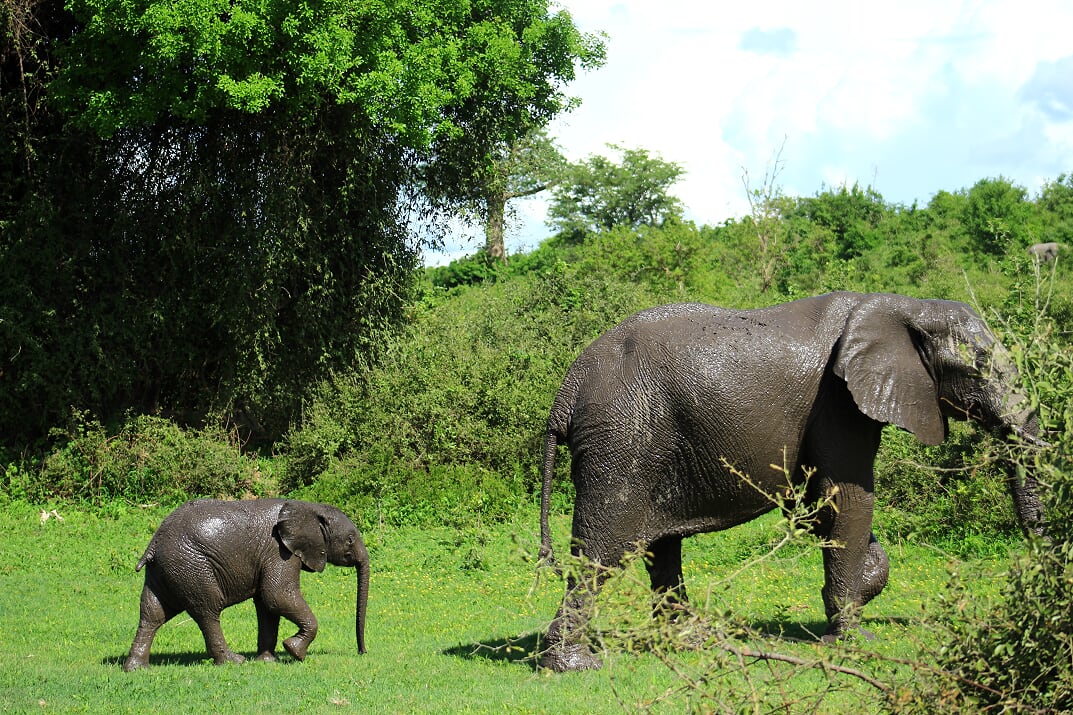 Suncreen for the day baby elephant with its mother
Suncreen for the day baby elephant with its mother
By the 6th night, the last night of our safari, our semi-participation safari had the girls putting up their own tents. Being the bride, I allowed my husband to do that for me! Our last night meant a special meal for us all. While the food was yummy the entire trip, night 6 was just that extra special. Food is one of my guilty pleasures and each morning I would ask about the meals for the day. On day 6, Moscow whispered into my ear that we would be having seswaa, morogo and phaleche (delicious meat in cabbage and pap), I squealed with excitement! And it did not disappoint. KD, the best chef ever, has gifted hands, he even masters baking a cake with no oven.
 The girls taking charge of their tent with KD
The girls taking charge of their tent with KD
And so on day 7, with happy bodies and full hearts, we said good-bye to Bushways, heading off on the next leg of our journey. From the reservations staff, to the guides and guide assistant, offering us superb service and support at each step of the way, and being integral to our adventure, we had been provided with a holiday of a lifetime. Thank you to each one that had made it special. We had more than endured! I had done well!
Why we love it: the 10N Authentic Lodge & Mobile Safari
The combination of a mobile safari with time-out at a lodge or camp on either side provides the best of both worlds. There is time to get dirty and experience all the action up close and personal, and time to dust off, relax and indulge in some modern comforts.
Ilala Lodge is conveniently located in close proximity to the Victoria Falls Hotel for afternoon tea, the local market for some shopping and the mighty falls themselves. Ilala is well known for having one of the best restaurants in town. 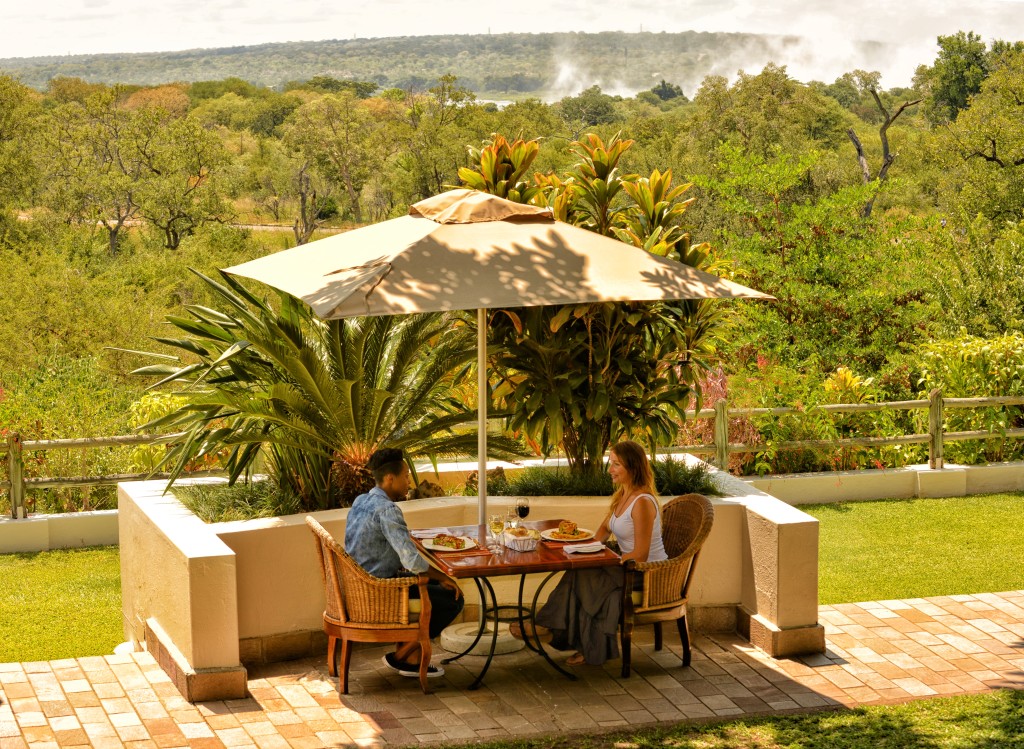
The Bush Ways Fully Serviced Safari is glamping at its best, an experience of the wild in comfort, covering some of the prime wildlife areas in Botswana, including the Chobe Riverfront, Savute marsh & Moremi Game Reserve. This is the perfect balance of adventure, relaxation & comfort with all camp chores taken care of for you. You’ll enjoy a luxury camp set-up for you on arrival, including walk-in tents, en-suite bathrooms, comfortable camp beds and a guaranteed a window seat on game drives.
The mobile portion of the itinerary is easy to book and there is still availability for 2018. Select departures run with German or French-speaking translators. Click on the below to read a firsthand account from one of our experts. 
No safari to Botswana is complete without a fly-in to the Okavango Delta to view the waterways from the air and glide through the channels on a mokoro. Oddballs Enclave is an old classic whose style and intimate atmosphere works well in combination with the mobile safari. 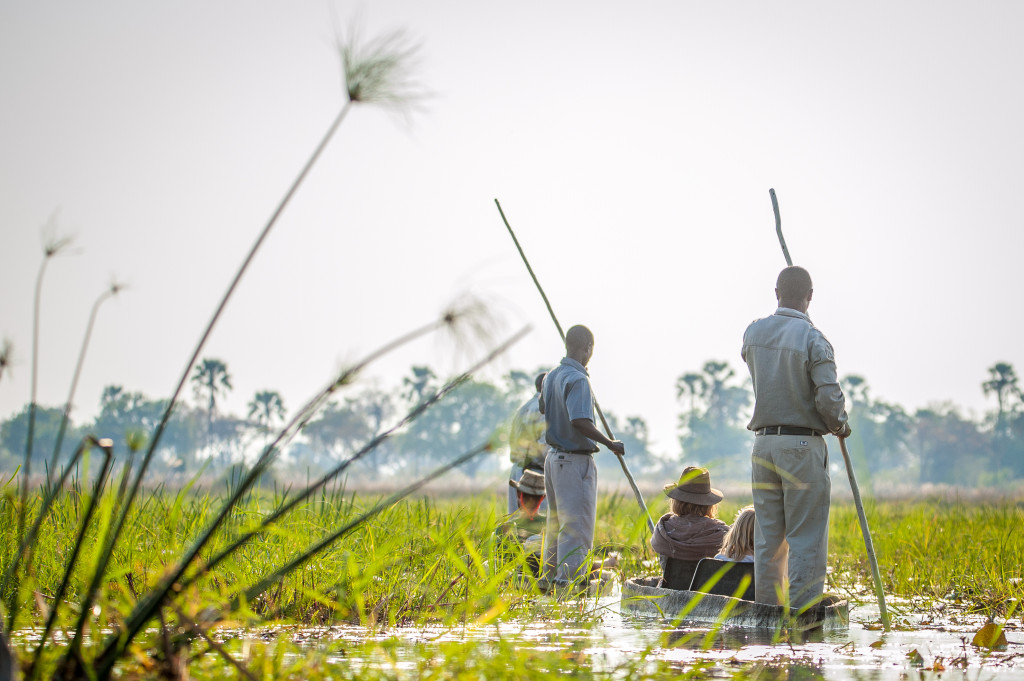
This safari offers excellent value for money !
Last but not least, we are passionate about mobile safaris because…
- the guides are among the best and get to know their clients over the course of the safari, focusing on their interests and building on their knowledge.
- travellers get to experience more of the country when they drive between locations, making it as much about the journey as the destination.
- mobile safaris give you access to exclusive campsites in prime wildlife areas, and the flexibility for an extended exploration of areas en-route between locations.
- mobile safaris take travellers out of their comfort zone, creating memories to last a lifetime.
- mobile safaris offer a more intimate wildlife experience than most lodge stays.
- mobile safaris offer great value for money, catering across all comfort and budget levels, and can be booked privately for families and small groups.
Click here to read more about the mobile safari experience: https://www.safaridestinations.net/we-get-around/bush-ways-safaris-mayonnaise 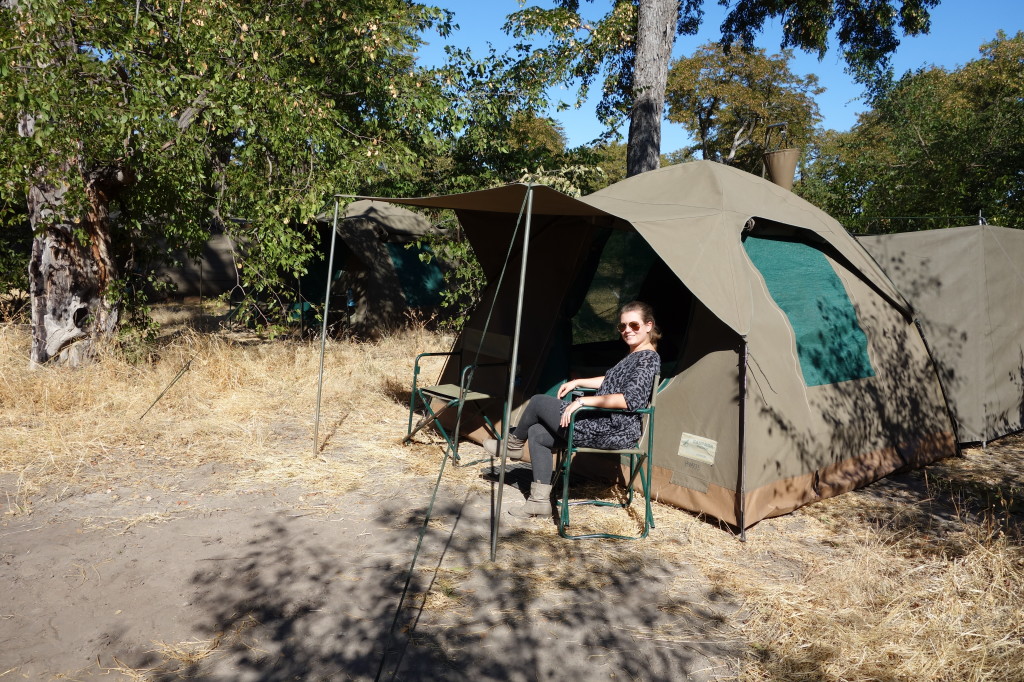
From the Delta to the Desert – on Safari with Ralph Bousfield
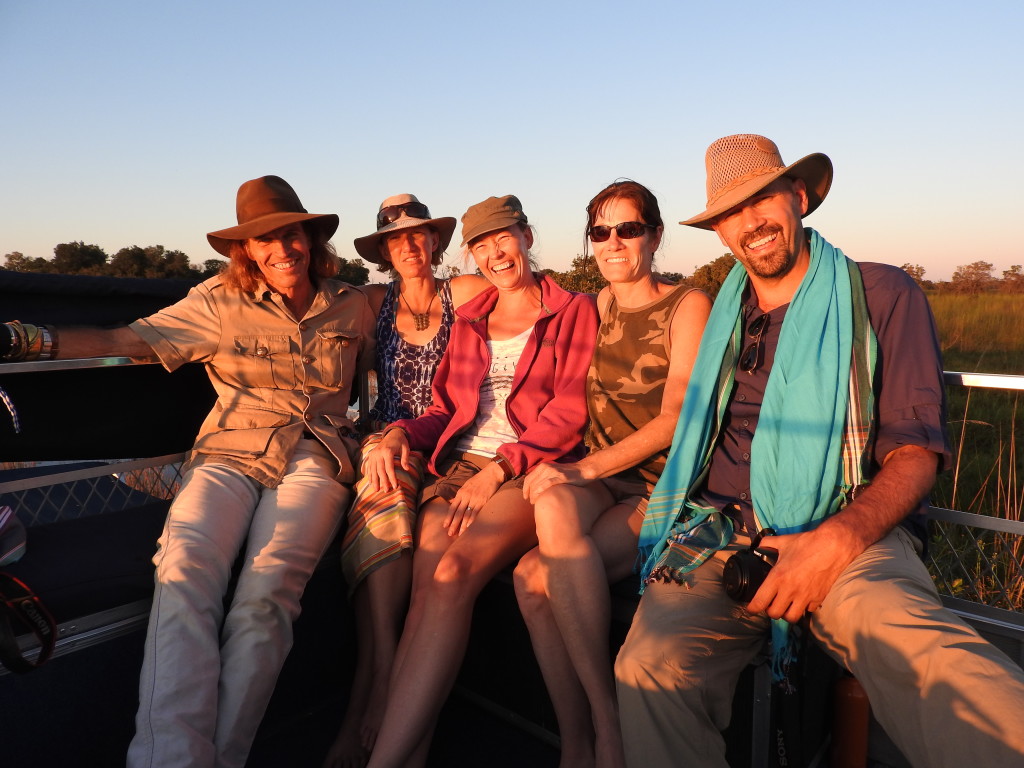 Wow – what a special experience! Recently I was privileged to join a group of agents on an Uncharted Africa educational to Moremi, the Delta and the Salt Pans.
Wow – what a special experience! Recently I was privileged to join a group of agents on an Uncharted Africa educational to Moremi, the Delta and the Salt Pans.
Arriving at our mobile camp set up between 2nd and 3rd bridge in Moremi Game Reserve after dark was like arriving in fairy land, with all the lanterns down the pathways and throughout the camp. Welcomed with a glass of sparkling wine, we were settled in.
This luxury mobile set up boasts a combination of elegance and a kind of exploration history giving you all the comforts of beds, en-suite bathrooms with bucket showers and flush toilets. This was to be our home for the next 2 nights. A mobile safari gives you a private camp feeling much closer to the bush than the infrastructure of any lodge. Lying in bed at night and listening the bush come alive, as certain curious species of game come to inspect the different smells and activities of our camp.
Our Guides, Ralph Bousfield and Greg certainly did not disappoint with their in depth knowledge and passion for the bush and stories of exploration, history, culture and scientific facts kept us all engaged and entertained the entire time we were with them. The other advantage of a mobile safari is creating a trust and a bond with your guide that will be with you throughout your trip.
Day 3 we boated far into the Okavango Delta, to our Island stop where Devon (our Camp Manager) was waiting for us, fly camp set up, with more food and drinks. Our set up was a roll mat with a mosquito net under the vast stars in the middle of the Okavango Delta. It gave us a feeling of being truly in the wild, in one of the most beautiful places on earth. Here we experienced the water ways of the Delta, whilst competing against each other on the number of Sitatunga and Otters we spotted. Nature walks around the island with Ralph proving to Simona we could still make a pizza from natural plants, mushrooms and shrubs on the island as well as curing malaria at the same time.
Day 4 our Delta experience was over and we flew out to the openness of the Makgadikgadi Pans. Our home here for 2 nights was in the most feminine of all 3 Uncharted Africa camps, San Camp.
You have a choice of 3 camps all meeting 3 different styles and budgets, whilst you can all enjoy the same activities.
Camp Kalahari situated further back in the grasslands is the least expensive of the 3 camps. It is currently raising all the tents, to allow the breeze to blow through and give you more of a view of the Pans.
San Camp being the lady of the 3, situated on the edge of the pans themselves is seasonal and only operational from April to October. Its white tents on the edge of the pans gives you the true feeling of being on the moon.
Jacks Camp, this colonial and historic camp based at the edge of the pans but slightly back into the grasslands is the grande-dame of the three. Packed with history and science with their registered museum, it does look fabulous after the completion of its refurbishment.
One thing to mention on the activities, is all 3 camps run the same activities on a rotational cycle so that guests from 2 different camps don’t do the same activity together. This is the reason that a 3 night stay in the dry season is recommended to be offered the surprise sleep out (weather dependant). Activities include a cultural bushman walk, game drives looking for more adapted desert species, quad biking in the dry season, following and interacting with the very comical habituated meerkats, horse riding as an optional extra and watching the sun set where it is so silent that your ears ring.
A safari to the Salt Pans is such a unique experience, from the Zebra migration in the Green Season to exploring the pans on quad bikes in the dry season, it should not be missed.
Bush Ways Safaris & Mayonnaise – on safari in Savuti and Khwai
Bush Ways and Mayonnaise
“Who wants mayonnaise? ‘ Masters asks. There’s a moment of silence where all five of us fail to jump on his offer. ‘It’s good for the eyes!!!’ he says, putting another spoonful on his dinner and passing the jar down the table. ‘If you don’t see any animals tomorrow, you know who to blame.”
We’ve just arrived in Savute. It’s the end of October, it’s HOT and we’ve just met Masters who will guide us through this area and later on to Khwai. We’ve also just learnt Masters’ best-kept secret for spotting game, except that he isn’t too concerned with keeping his trick in the bag.
We had returned from an incredible sunset over a waterhole which we shared with a cross-legged elephant and a few roan antelope. As Masters had pulled out the G&T the roan scattered and herds of impala sprinted out of the background. “See’ said Masters ‘we were so lucky to see that Roan. If we’d turned up a little later, we wouldn’t have seen anything at all.”
We were quickly learning that this was the advantage of being on a mobile safari, spending two nights in each area, driving around the same corners but seeing different things on the horizon each time. Just when we’d begun to recognise the roads and game patterns in one area, we’d travel to the next campsite and look for it all again on a different backdrop, but with the same guide who understood what we’d already seen and where we’d already been. If we hadn’t seen something yet, Masters usually had a quick solution. When we put hyenas on our wish-list he pointed to his shirt and grinned, “It’s the Bushways logo! You’ve already seen one.”
In the wide-open space of the Savute marsh we spent our time chasing wildebeest, watching elephants sleeping standing up against trees, a big male lion bending a branch under his chin for a pillow and wild dog collapsed in a mess of legs and ears under the closest shade they could find. The animals regarded us vaguely but didn’t bother stirring as our cameras clicked away. Despite the intense heat which kept most animals in the shade, we came across plenty of elephants butting their heads against trees, hippos yawning out twisted laughter and a herd of buffalo big enough to be counted at a thousand, give or take a few. “That’s my favourite animal’ said Masters ‘because with that one…eish…the buffalo doesn’t mock charge, so if he comes for you, it’s already too late!” The rest of our group had already heard these tales in Chobe, spending their first night on safari wide awake as buffalo entered the campsite and Masters’ tales repeated in their minds.
On the road between Savuti and Khwai we watched green open spaces turn to long yellow grasses and closed-in mopane forest before stopping for tea in open grasslands of the Mababe Depression. The landscape was yellow and the sky a blazing blue that formed mirages on the horizon. “As soon as the rain starts, this place is green, green, green and full of thousands of zebra and wildebeest.” It was hard to imagine that we were only a few weeks away from a complete landscape change that would come with the first rains.
Arriving in Khwai, Masters found us seven lions under a tree, across the road from two signs pointing in opposite directions. “Welcome to Chobe” on the left and “Moremi Game Reserve – 20kms” on the right with no fences in between to impede the animals’ movements.
The lions were almost impossible to see, even as we stared straight at them camouflaged in the yellow grass. “It’s because I eat mayonnaise” Masters reminded us. As we jumped out of the vehicle on the Khwai River for sundowners, there was a burst of activity on the radio and Masters bundled us back in the car “There’s a leopard over that way…let’s go!” As the sun dipped towards the horizon, we bumped along off-road and came upon a female leopard making contact calls. We watched her as she jumped up on branches, circumnavigated termite mounds and prowled around the vehicle. Heading over to our campsite in the now pitch-black night, Masters told us to look for shining eyes as he moved his flashlight across the bush. Impala, impala…more impala, then suddenly several pairs of eyes caught the light and we found ourselves amidst ten or so spotted hyena fighting over the carcass of a baby elephant. We sat and watched as their curved ears caught the torchlight and they pulled meat from the carcass, rocking it back and forth in a little tug of war. “See?’ says Masters “Bushways watching Bushways!”
Just as we’d thought we were done for the night, a civet ran across the road in a spotted blur and we arrived back at our campsite to find our tents made up, our showers ready and food almost on the table.
Over dinner we discussed food, “I don’t understand how you foreigners each so much’ Masters said piling the mayonnaise on his dinner ‘if we do that, we get fat.” We tried to protest that people don’t normally eat us much as they do on safari, but he cut us off, ‘did you eat your mayonnaise? If we don’t see anything tomorrow, you know who to blame!” By now, Masters has made his point and everyone around the table takes a spoonful.
The next day we see the hyenas again, sleeping under bushes as vultures move in on the baby elephant. In the daylight we can see the tiny protrusions of the elephant’s milk tusks from the skull. We see waterbuck, giraffe, zebra, red lechwe, hippos, warthog, Egyptian geese, bateleur eagles and saddle-billed storks. We stop for a mokoro excursion in the afternoon and everyone comes back with water lily necklaces and hats. That night we see the spotted hyena again, munching on baby elephant for the second night in a row.
On our last night we’re a little sad to think it’s back to the real world where we don’t find ourselves in the middle of herds of antelope, elephant, wildebeest and buffalo every day. We hear hyena calling in the night and lions roaring close by in the morning. We’re all excited over breakfast, hoping to catch the lions before we leave.
For a long time we find nothing. We visit the spot where we found the lions last. Nothing. We drive several tracks looking for spoor. Nothing. We turn the next corner and meet a vehicle hurtling down the track, the guide behind the wheel motioning for us to follow. We pick up the pace and arrive at a clearing in the bush where two lionesses are running across the clearing, herding their cubs off. “This is interesting’ says Masters ‘they’re nervous about something.” He moves the vehicle and we see three big male lions in the bushes. “I think they’re trying to kill the cubs so they can mate with the females” he says. We watch as the lioness lead their cubs quickly off, stopping, looking over their shoulders and moving further into the brush. Masters moves the vehicle to where he thinks they may emerge from the shrub and sure enough, a few minutes later they walk right past us. Masters giggles and gets on the radio ‘they’re walking towards our campsite’ he says, ‘I need to radio the camp staff to get in the car.”
“I think they might go to the river for a drink’ says Masters, putting the car in gear. It’s a guess that pays off. As Masters parks by the river we wait a little while and sure enough, the lions emerge. “The girls might just take their cubs across the river for safety. Those big male lions will try to track them. This isn’t something you see often, cats don’t like getting wet and crocodiles are a threat to them too.”
The lioness round up their cubs and take them to the narrowest part of the river, belly-flopping into the water and beginning to paddle. Very soon, all nine are treading over to the other side. We’re feeling a bit inspired and all cheer ‘mayonnaise!’ as the lions emerge looking soggy and worried before disappearing into the Moremi Game Reserve on the other side of the Khwai River. A moment later we’re also on the road out of Khwai, heading back to the real world on the calcrete road to Maun.
Bushways Fully Serviced Mobile Safari
6 Nights in Khwai, Savuti & Chobe
Combine with: Victoria Falls and the Okavango Delta on our 10N Authentic Lodge & Mobile with optional extension to Meno a Kwena on the Boteti River/Makgadikgadi NP.
Access: from Maun or Kasane/Vic Falls or Livingstone with Northbound and Southbound departures throughout the year.





